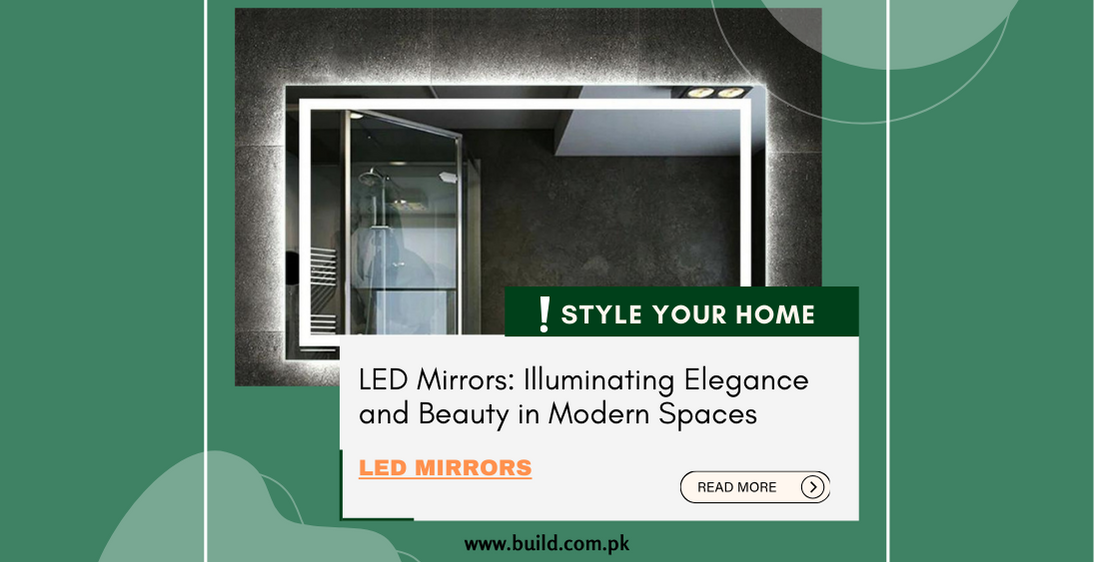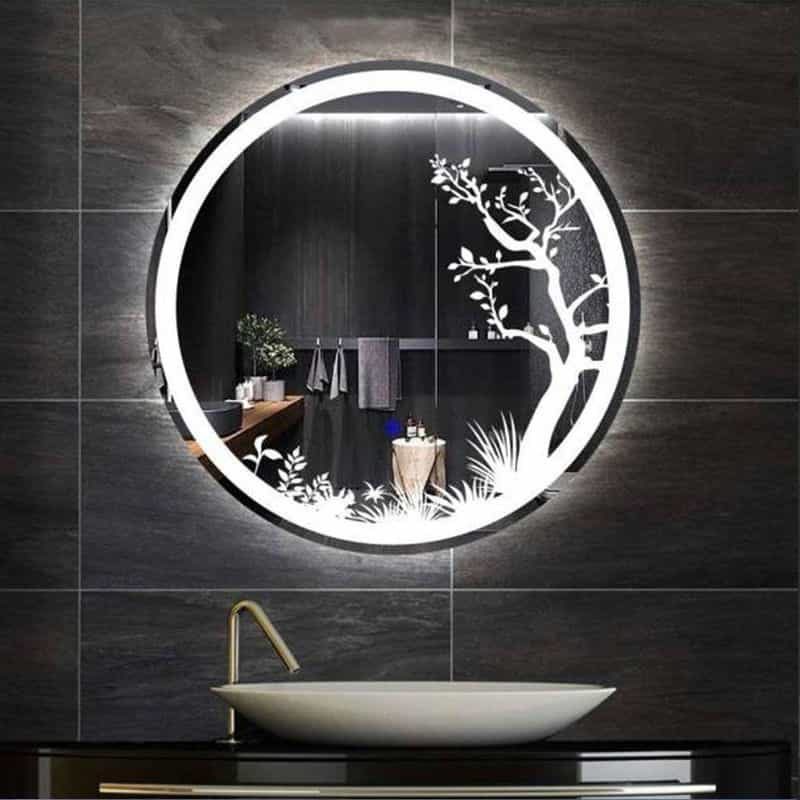LED Mirrors: Illuminating Elegance and Beauty in Modern Spaces

Introduction:
LED mirrors represent a fusion of modern technology and
aesthetic design, offering not only reflective functionality but also
integrated energy-efficient lighting. These mirrors have become a hallmark of
contemporary interior design, elevating the functionality and ambiance of
various spaces LED mirrors stand as a fusion of cutting-edge technology and
aesthetic design, offering a uniq ue blend of functionality and style. This
detailed guide explores the features, benefits, design variations, installation
considerations, energy efficiency, and market landscape of LED mirrors.
Understanding LED Mirrors
Design:
LED mirrors integrate energy-efficient LED lighting directly
into the mirror's frame. This illumination provides even, shadow-free lighting,
ideal for various tasks such as makeup application, grooming, and providing
ambient lighting in bathrooms or dressing areas.
Technology Integration:
Advanced LED mirror models often incorporate additional
features such as anti-fogging functionality, touch-sensitive controls,
adjustable color temperatures, and built-in Bluetooth speakers, enhancing
convenience and usability.
Aesthetic Appeal:
LED mirrors come in diverse designs, shapes, and sizes to
complement different interior styles. Whether sleek and minimalist or ornate
and decorative, these mirrors serve as functional decor elements, adding
sophistication to spaces.

Benefits of LED Mirrors
Superior Lighting:
The integrated LED lighting provides clear, bright, and even
illumination, enhancing visibility for tasks like grooming and makeup
application while minimizing shadows.
Energy Efficiency:
LED technology offers energy-efficient lighting, consuming
less power than traditional incandescent or fluorescent bulbs, resulting in
reduced energy costs.
Anti-Fogging Properties:
Many LED mirrors feature anti-fog functionality, ensuring the
mirror remains clear even in high-humidity environments, making them ideal for
bathrooms.
Drawbacks of LED Mirrors
Initial Cost:
One of the primary drawbacks of LED mirrors is their initial
cost, which can be higher compared to traditional mirrors. Advanced features
and technology integration contribute to their premium pricing, which might
deter some consumers.
Electrical Components:
The electrical components within LED mirrors can sometimes
pose durability concerns. Malfunctions in LED lighting or other integrated
features might occur, requiring professional repair or replacement, adding to
maintenance costs.
Limited Customization:
While LED mirrors offer various designs, sizes, and
functionalities, customization options might be limited compared to traditional
mirrors. Specific sizes or custom features might not be readily available,
limiting personalized options.
Design Variations and Considerations
Shapes and Sizes:
LED mirrors are available in various shapes, including
rectangular, round, oval, and custom shapes, catering to diverse design
preferences and space requirements.
Installation Options:
LED mirrors can be wall-mounted or recessed, offering
flexibility in installation. Some models come with easy-to-install features,
simplifying the setup process.
Smart Features:
Certain LED mirrors incorporate smart technology, allowing
for dimming controls, color temperature adjustments, and even connectivity with
smart home systems for added functionality.
Energy Efficiency and Market Availability
Energy-Saving Technology:
LED technology used in mirrors consumes less energy, making
LED mirrors an eco-friendly and cost-effective lighting solution.
Market Landscape:
Renowned brands such as Krugg, Paris Mirror, and Keonjinn
offer a wide range of LED mirrors, available in different designs and
functionalities. They are accessible through various retailers and online
platforms, providing a broad range of choices.
Conclusion:
LED mirrors combine functionality, style, and technology to
elevate modern spaces. Their superior lighting, energy efficiency, diverse
designs, and technological advancements cater to various needs, making them an
ideal addition to bathrooms, dressing areas, or any space requiring efficient
and elegant illumination.
Their availability in different designs, functionalities, and
sizes across diverse marke tplaces ensures that individuals can find the perfect
LED mirror to enhance their space while embracing modern technology and
sophistication.
This comprehensive guide covers the features, benefits,
design variations, installation considerations, energy efficiency, and market
landscape of LED mirrors, emphasizing their role as both functional and
decorative elements in contemporary spaces.









